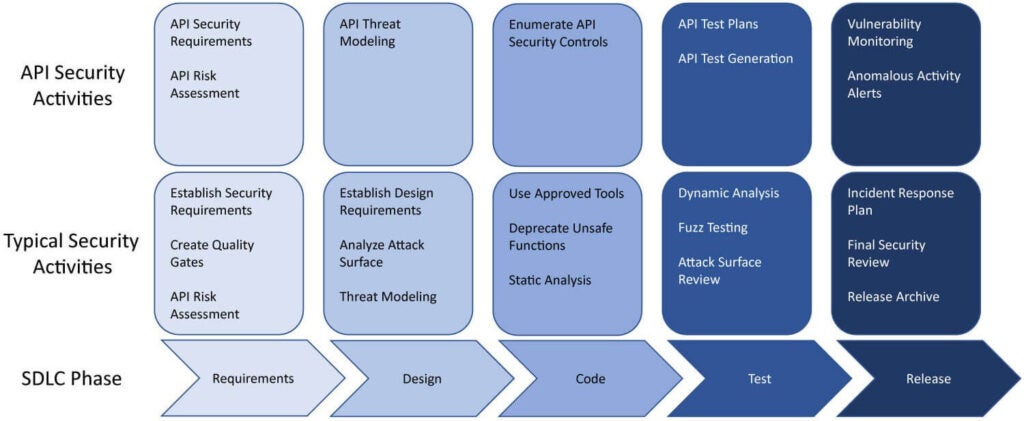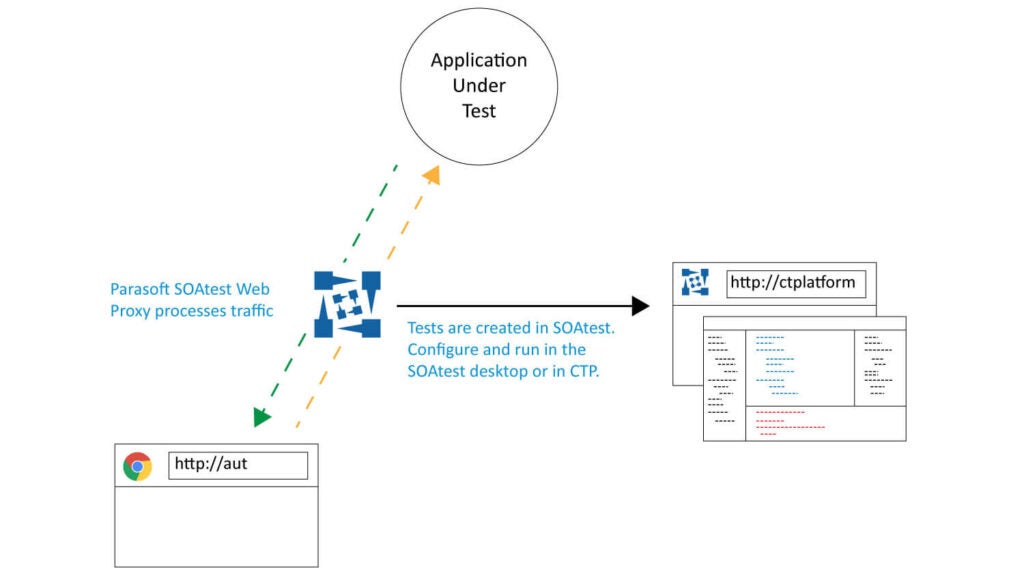See what API testing solution came out on top in the GigaOm Radar Report. Get your free analyst report >>


See what API testing solution came out on top in the GigaOm Radar Report. Get your free analyst report >>

API security testing helps mitigate security issues for web applications, IoT devices, and other endpoints. Teams can use API security testing to understand complex API behaviors and interactions to identify vulnerabilities that could expose sensitive data.
API Security Testing
API security testing is the process of using dynamic application security testing (DAST) and verb fuzzing techniques to identify security misconfigurations and vulnerabilities in an application programming interface (API). The goal is to ensure that APIs adhere to organizational policy and best practices.
In today’s world, APIs are the core part of many applications that power the internet and play a key role in delivering functionality, business functions, and services.
API security testing helps identify where an API diverges from published API specifications. For example, is the API endpoint responding to the correct HTTP requests? This helps validate the correctness of APIs and identify discrepancies in published API specifications.
Ensuring that APIs adhere to published specifications and are protected against malicious inputs and attacks is critical to reducing an organization’s overall security risks. Naturally, API security testing puts a heavy focus on eliminating API vulnerabilities to improve overall application security posture before APIs are deployed to production environments.

Let’s learn more about API best practices, challenges, and key features of API security testing. Automate your application security and API security testing with Parasoft SOAtest to detect and prevent vulnerabilities that may result in cybersecurity breaches.
Want to discover a fresh approach to comprehensive API security testing? Check out our valuable guide.
Security testing for APIs, or application programming interfaces works best when testers incorporate security as part of QA functional testing. Testers can run manual testing and automated tests to enforce security best practices, such as access control with proper authentication and authorization, that all APIs must adhere to in order to pass security scans.
Testers can realize the following benefits in Parasoft’s API security testing solution.

Automate API security testing in DevSecOps pipeline for continuous feedback on API security issues. These benefits help testing teams improve their DevOps testing efforts and increase visibility into threats that impact their APIs. Realizing these benefits give organizations the confidence they need in deploying API services to support business operations.
Leveraging SAST and DAST as part of API security testing is the most effective way to test for security issues.
SAST can be used to detect coding issues that present potential API vulnerabilities. Using SAST can help developers improve code quality and security for APIs, as well as ensure things like proper authentication and authorization are implemented correctly in code to fortify APIs.
DAST can be used to perform security testing against your active API assets by running an active test that simulates real-world attacks to find potential vulnerabilities. This includes validating authentication and authorization controls are implemented correctly to protect APIs.
While traditional DAST tools struggle to understand API behavior, Parasoft’s SOAtest + DAST integration can leverage existing API test scenarios to run security testing as part of functional testing.
Other testing capabilities include, but aren’t limited to, the following.
Here are just a couple of issues that these API security testing techniques help organizations find. There are more.
Visibility into your API assets is a great starting point to achieve in-depth API security testing. Here’s how Parasoft’s API Security Testing solution helps organizations.
Effective and comprehensive API security testing starts with detection to find potential security bugs, misconfigurations, and anomalous behavior in your APIs. These issues become blind spots that could expose APIs to attacks. Detection is important to help organizations find and fix security issues early in their SDLC.
Use your API reporting results to understand your APIs in terms of their value to your business. Use your API coverage data to ensure all API services adequately test for security vulnerabilities. Security testers can use this context to better understand how security threats can impact business logic and behavior of API functionality.
Analyzing what changed and how those changes impact your APIs is critical for developing the right set of security tests. Organizations can identify potential attack vectors and exposures that need to be tested for security vulnerabilities. API security testing should provide a continuous approach to analyzing the impact of changes to API resources (authentication, API functions and parameters, data) that help security testers resolve known issues in APIs to ensure effective API security testing.
Launching security testing and penetration testing as part of functional testing is the ideal way to prevent security vulnerabilities and save in development costs. Finding and remediating security issues in functional testing with a shift-left approach improves the quality and security that enables companies to deploy and implement their APIs with complete confidence.
API security testing is designed to find a wide range of security threats and vulnerabilities, like API misuse and abuse, security misconfigurations, authentication, authorization, poor logging, and other issues related to authentication, authorization, and sensitive data.
These threats are documented in the OWASP Top 10 API Security Risks 2023 list and serve as best practices to protect and secure your APIs.
Injection attacks are widely known attack vectors that impact both native web application security and APIs. They occur when hostile inputs are put into an API such as an SQL injection or command injection. These attacks seek to gain privileges in order to gain access to data.
Other examples include something like a test for parameter tampering. This is when someone changes API request values to bypass what should be secure information. Checking related API elements on a web app or website via the browser console is an easy test to tell whether or not an API is secure.
The most common example of an API security test might be input fuzzing. In this test, someone puts random information into an API until something unexpected happens. This can cause error messages or total crashes thus revealing vulnerabilities in an application to outside attackers. It’s important to debug and troubleshoot error messages associated with APIs to understand potential security risks and resolve issues associated with APIs.
The following is a complete list of OWASP API Security Top 10 2023 security threats and vulnerabilities that organizations should be aware of when testing their APIs.

Parasoft converts manual and automated UI tests into automated API tests.
There are many ways to enhance your software development workflow and ensure secure APIs. Automation is one of the few guaranteed measures that will deliver returns.
Whether it’s a CI/CD pipeline implementation, updating best practices for API security testing, or reacting to OWASP API Top 10 changes, Parasoft tools offer agility, consistency, and versatility.

Elevate your software testing with Parasoft solutions.